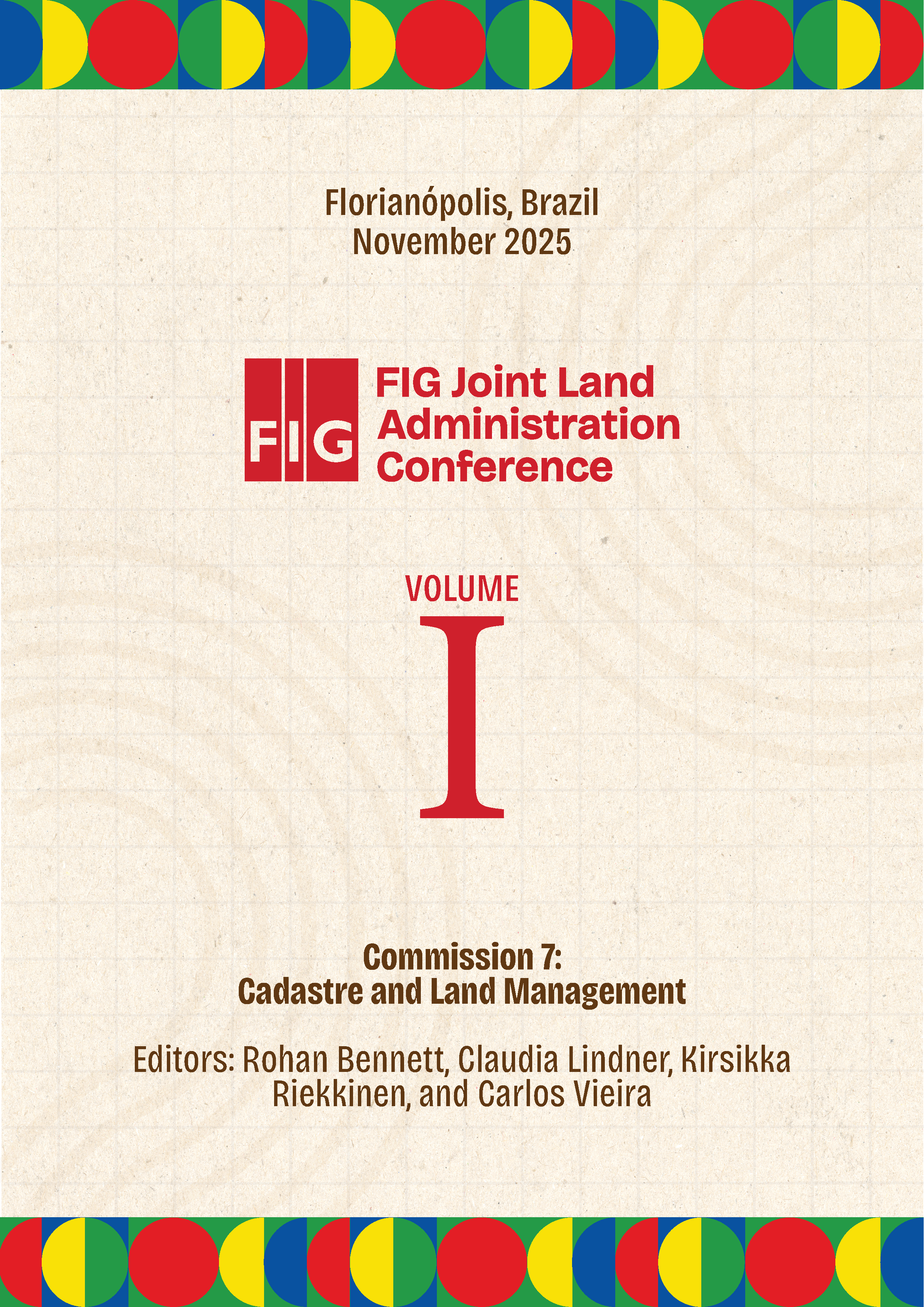Mapping Academic Capacity in Geomatics and Land Administration Worldwide
Palavras-chave:
Geomatics Education, Land Administration Education, Web Map Viewer FIGResumo
Geomatics plays a fundamental role in addressing global challenges, integrating six interconnected pillars: geography; geodesy and surveying; Earth observation (photogrammetry, remote sensing); geoinformatics (GIS, spatial databases, territorial analysis); cartography; and land administration. Within this framework, land administration is not external to geomatics but one of its core pillars, when addressed from a technical and engineering perspective (e.g. cadastral information management, land tenure systems, technical land registration, and spatial data infrastructures). This holistic perspective positions geomatics as both a technological and institutional discipline, bridging science, society, and policy. This presentation introduces an interactive web-based map viewer designed to explore and analyze university-level geomatics programs worldwide. The dataset was compiled exclusively from publicly available information (university websites, study catalogs, and accreditation databases). Programs were included if they are explicitly named Geomatics, Geographic/Geospatial Engineering, Geodesy, Surveying, Cartographic Engineering, or Land Administration when the latter has a technical/engineering focus. Programs dealing with land administration solely from a social sciences perspective were excluded. To ensure academic and professional relevance, all inclusions were validated with the approval of FIG members, who represent the profession globally and safeguard against academic intrusions outside the discipline. Standardized metadata (official title, institution, country, degree level, core subjects, URL, and date of access) was recorded to enable comparison and filtering. The viewer allows users to search and filter programs, analyze geographic distribution and curricular content, and identify institutional clusters, thematic gaps (e.g. weak integration of land administration in certain regions), and emerging trends in curriculum development.
Limitations such as incomplete data, language barriers, and uneven institutional reporting are acknowledged. These are mitigated by the dynamic update mechanism: the platform evolves continuously through contributions from FIG members, academic institutions, and researchers, with transparent versioning. The insights produced are not only descriptive but actionable, providing evidence to guide curriculum enhancement, foster international cooperation, and target capacity building in underrepresented regions. The presentation will demonstrate the platform’s functionalities, highlight selected analytical findings, and show how this initiative can support the alignment of geomatics education with the pressing challenges of climate geo-resilience and sustainable development.


